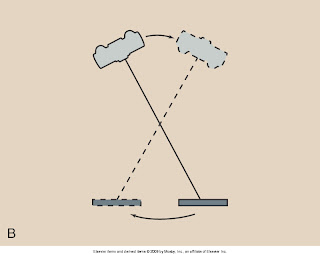


What is Fluroscopy?
Fluoroscopy is a method of imaging that allows live, continuous action to be viewed.
Radiographs capture a specific image at a specific moment in time. (still picture)
Fluoroscopy allows us to watch as things happen in real time (live action)

Since Thomas A. Edison invented the fluroscope in 1896, it has been a valuable tool in the practice of radiology. 
________________________________________________
During Fluroscopy, the x-ray tube is operated at less than 5 mA; contrast this with a
radiographic examination, in which the tube current is measured om hundred of ma. Despite the lower mA, however the patient dose is considerably higher during fluroscopy than it is in radiographic examination because the x-ray beam exposes the patient for a considerably longer time.
_______________________________________________
MAXIMUM image detail is desired this requires high image brightness. The image intensifer was developed principally to replace the conventional fluroscent screens, which has to be viewed in a darkened room and then only after 15 minutes of dark adaption. The image intensifer raises the illumination into the cone-vision region, where visual acuity is greatest.
The brightness of the fluroscopic image depends primarily on the anatomy being examined, the kVp, and the mA. Generally high kVp and low mA are preferred.
During image-intensifed fluroscopy, the radiologic image is displayed on a telivison monitor.

___________________________________________
The image-intensification tube is a complex electronic device that receives the image-forming x-ray beam and converts it into visible light image of high intensity.
Input phosphor
Made of cesium iodide (CsI)
Receives radiation exiting patient x-rays converted to visable light
Emits light photons
Photo cathode
Responds to light exiting input phosphor light -> electrons
Emits electrons
Electrostatic lenses
Focus electrons
Output phosphor
Receives electrons from photocathode
Emits 50-75× more light than received by photocathode

Bottle detected under womans skirt by the use of x-rays...
____________________________________________________





